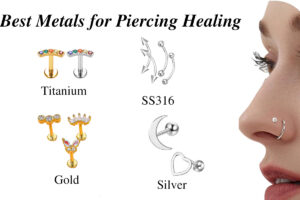Introduzione: Ottimizzazione dei costi logistica per il piercing di gioielli importanti
As the global demand for piercing jewelry continues to grow, importers are facing increasing challenges in managing transportation and logistics costs. These costs, which include transportation fees, warehousing, confezione, and customs duties, can significantly impact the bottom line of piercing jewelry import businesses.
In this article, we’ll explore effective strategies for optimizing logistics costs, focusing on ways to reduce transportation expenses for piercing jewelry imports. From consolidating shipments to negotiating better shipping rates, leveraging technology, and adopting packaging solutions, we will cover various tactics that can help businesses cut costs and streamline their operations.
Understanding Logistics Costs in Piercing Jewelry Import
Logistics costs in the piercing jewelry import process typically include transportation, warehousing, confezione, and customs duties. Transportation costs, in particular, are often the largest portion of logistics expenses, sometimes accounting for up to 20% of the total cost of imported goods.
For piercing jewelry importers, these costs are influenced by factors such as the size and weight of shipments, the chosen mode of transport (air, sea, or land), the distance from the manufacturer to the destination, and the carrier used. Managing these costs effectively is essential for maintaining competitive pricing and maximizing profit margins.
Key Strategies for Cost Optimization
To reduce transportation costs, piercing jewelry importers can implement several cost-saving strategies. These strategies focus on improving efficiency, reducing unnecessary expenses, and negotiating better terms with suppliers and carriers.
1. Shipment Consolidation: Reducing Per-Unit Shipping Costs
One of the most effective ways to optimize transportation costs is through shipment consolidation. This strategy involves combining multiple small orders into a single, larger shipment, which reduces the overall cost per unit due to economies of scale. By consolidating shipments, importers can lower shipping fees and improve inventory management.
Shipment consolidation also streamlines logistics by reducing the number of shipments, simplifying the shipping process, and reducing related administrative work.
2. Negotiating Better Shipping Rates with Carriers
Negotiating favorable shipping rates with carriers is another essential strategy for reducing logistics costs. Carriers often offer discounted rates to companies that ship in bulk or regularly. Importers should leverage their shipping volume to negotiate better rates and consider signing long-term contracts with carriers for consistent savings.
It’s also important to regularly review carrier contracts to ensure that importers are getting the best rates available. Comparing offers from multiple carriers and exploring alternative shipping methods can help avoid overpaying for services.
3. Leveraging Technology for Efficient Logistics Management
Technology plays a crucial role in optimizing logistics processes and reducing transportation costs. By using logistics management software, importers can track shipments in real-time, analyze shipping routes, and optimize delivery schedules, which reduces delays and costs.
Transportation Management Systems (TMS) help identify inefficiencies in the supply chain and recommend alternative shipping methods or routes, leading to reduced expenses and improved efficiency.
The Role of Shipment Consolidation in Cost Reduction
Come accennato in precedenza, shipment consolidation is a key method for reducing transportation costs. When multiple small shipments are combined into one larger shipment, the cost per unit decreases significantly. This strategy is particularly beneficial for piercing jewelry importers who regularly receive smaller orders.
By consolidating shipments, importers can reduce shipping costs, streamline logistics, and simplify the management of multiple orders, resulting in lower overall expenses.
Packaging Solutions to Lower Shipping Costs
Effective packaging also plays a crucial role in reducing logistics costs. For piercing jewelry, which is typically small and lightweight, shipping costs are often determined by the size and weight of the package.
Using lightweight packaging materials like corrugated cardboard, bubble wrap, or foam inserts can help reduce dimensional weight charges imposed by carriers. Furthermore, optimizing the size and shape of packages can reduce storage space requirements, which in turn lowers warehousing fees.
Successful Case Studies: Cost Optimization in Piercing Jewelry Import
Several piercing jewelry importers have successfully implemented cost optimization strategies, leading to significant savings in transportation expenses. For instance, one jewelry company was able to reduce its shipping costs by 40% by consolidating shipments and negotiating bulk shipping discounts with their carrier.
This approach not only lowered transportation costs but also improved the company’s profit margins, making them more competitive in the market.
Domande frequenti (Domande frequenti) About Logistics Cost Optimization
1. What factors influence logistics costs in piercing jewelry imports?
Logistics costs are influenced by factors such as the mode of transportation, shipment size, packaging efficiency, carrier rates, and customs duties.
2. How can I negotiate better shipping rates with carriers?
Negotiating better rates involves building relationships with carriers, leveraging your shipping volume, and regularly reviewing and comparing contracts to ensure you’re getting the best deal.
3. What is shipment consolidation and how does it save costs?
Shipment consolidation is the practice of combining multiple smaller shipments into one larger shipment, which reduces the shipping cost per unit and offers savings.
4. What technologies can help optimize logistics for jewelry imports?
Transportation Management Systems (TMS) and route optimization software can help track shipments, optimize delivery routes, and reduce delays, which ultimately lower logistics costs.
5. How can packaging solutions help lower shipping costs?
Using lightweight packaging materials and optimizing package sizes can significantly reduce shipping costs by minimizing the dimensional weight and storage space required.
Conclusione: Maximizing Profit Through Logistics Cost Optimization
For piercing jewelry importers, reducing logistics costs is essential for staying competitive and maximizing profits. By consolidating shipments, negotiating better rates with carriers, leveraging technology, and optimizing packaging, importers can lower transportation costs effectively.
If you’re looking to optimize your piercing jewelry imports, Sensagem offers Servizi OEM e ODM to help you manage product manufacturing and logistics efficiently. Contattaci a info@sensagem.com to learn more about how we can support your business.







